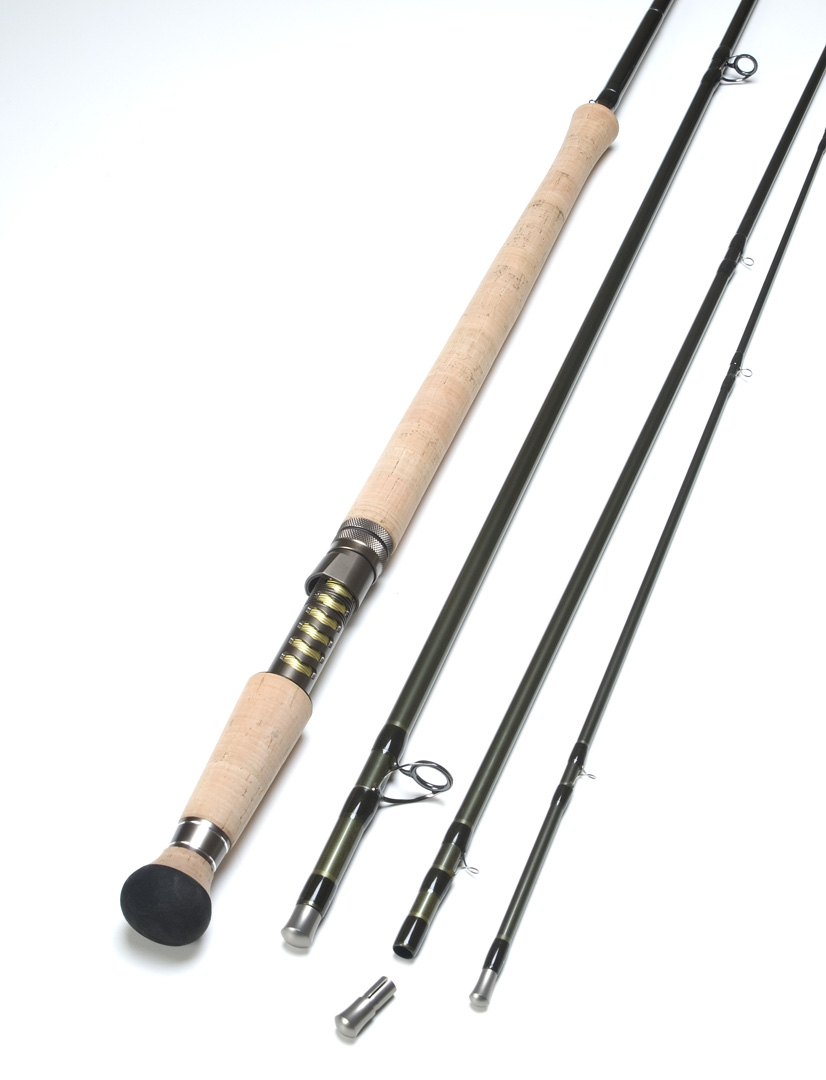Zenith rods are made using Sintrix, Hardy’s proprietary resin system, which means adding nano scale silica particles to the resin binding the carbon fibres to create a stronger, stiffer composite. “Whoopee!” I hear you cry.

In a manner of speaking, I’ve been waiting for this rod. This is where Sintrix should really stand out from conventional composites. Compare materials, the stuff used to make rod blanks, and as rods get longer we feel, really feel, the difference between old and new technology more and more as the rods get longer and longer.
I don’t fish with rods longer than this. I compared the Zenith with my own 15ft rod which is three-years-old and still casting well. The Zenith feels much lighter, especially the blank. The stiffness and action of the rods is similar, but I’d say the action, the curve under load, of the Zenith is a little faster, a little more tippy. The power or stiffness of the two is similar.
The Zenith feels brighter and easier to move. Crisp, accurate motions are naturally easier. In a sense, that’s the point of a fly rod; it magnifies motion, turning small movements at the butt into large displacements at the tip. Then, once we get the rod moving, of course we need to control it, move it where we want it to go and stop it – look at the physics of all that and you find length and mass are crucial. I want a 15ft rod but I want it lighter, easier to move; I want more feel for the line, less muffled by rod weight; I want less of my effort consumed simply moving the rod, save that for moving my line and fly. The Zenith delivered on all of those points.
I tried a couple of lines on the Zenith and I’d have a hard job saying the rod suits a shooting head or a long Spey head. This rod seems to adapt to whatever I can thread up the rings. To me that suggests the designers have made a rather good job of the butt sections in particular – stiff enough for shooting heads yet with enough give, enough bend, to handle long, heavy heads.
Hardy has packaged this rod beautifully; the metal tube comes in a cloth sleeve, each rod section has a plug protecting the female half of the joint. Undo the sleeve, unscrew the tube, slip the canvas wrapped rod from the tube, pull the plugs from the sections and tuck them away in their pocket on the bag … just setting up this rod becomes a minor ceremony encouraging a sense that this is special. The rod itself has had similar thought: the joints are ground so no paint or varnish comes between the sections when I push them home, which I expect from a premium rod; the grip is turned from very good cork, turned slim encouraging a light, delicate grip; relatively small, light, Recoil guides; that unique all metal, ‘screw-together’, Zenith reels seat fitted as a down-locker, traditional and sensible on double-handed fly rods.
Normally at this point I’d be thinking about who, on a scale from novice to expert caster, I think this rod would suit. I’m taking for granted this is a salmon rod, certainly in my part of the world it is. I’d happily fish this for most of the season, it can handle sinking lines and has the delicacy for lighter tapers and smaller flies. Clearly, price means this is aimed at committed anglers, i.e. those willing to dig deep for top-class tackle. That said, this rod does make casting that much easier, so I’m sure less expert casters will enjoy it.
As someone who owns a 15ft 10-weight I suppose the question I want to ask myself is: “Is the difference between this and my old rod enough to get me selling it to buy a Zenith?”
My answer is, “Yes”.



